#Common Tern
Explore tagged Tumblr posts
Text

Common Tern with its tiny catch! In Brooklyn Bridge Park, Pier 3.
#birds#birding#urban birding#nuts_about_birds#birdstagram#patch birding#nature blogger#nyc nature#brooklyn#brooklyn bridge park#nyc#nature#common tern#tern#charrán común
525 notes
·
View notes
Text

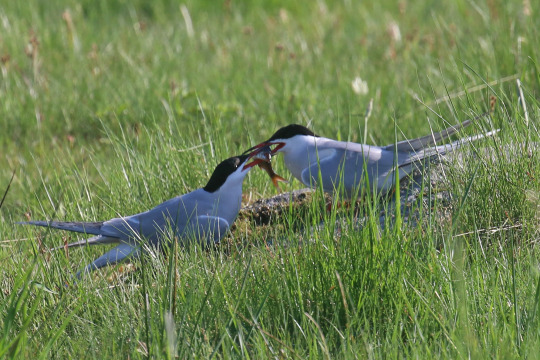


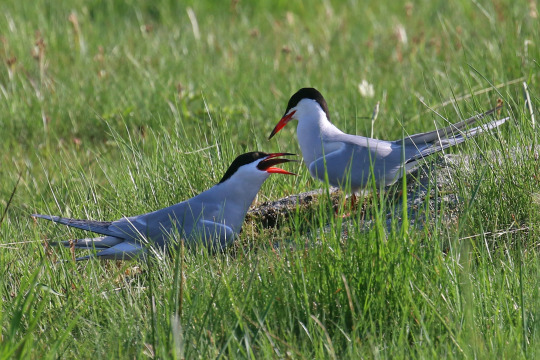

A romantic dinner, the Common tern/fisktärna way. Gysinge, Gästrikland, Sweden (May 17, 2024).
465 notes
·
View notes
Text
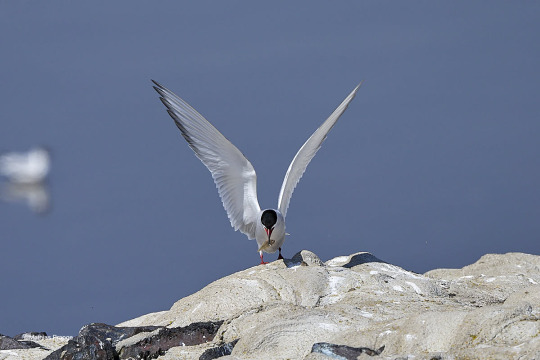
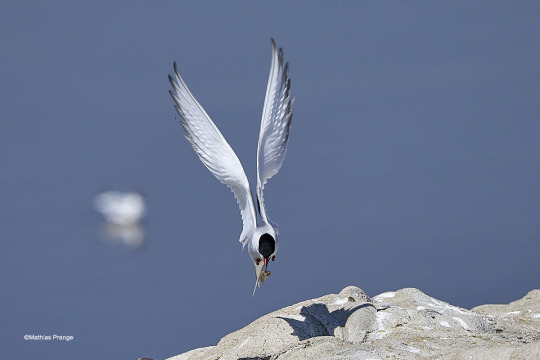
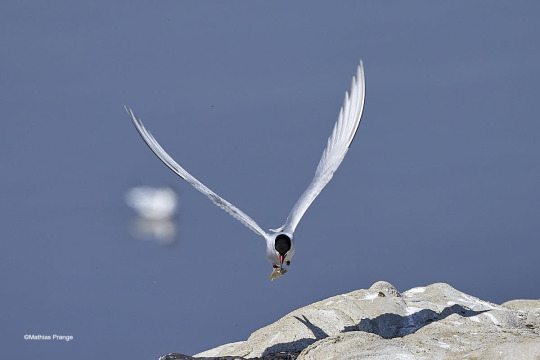
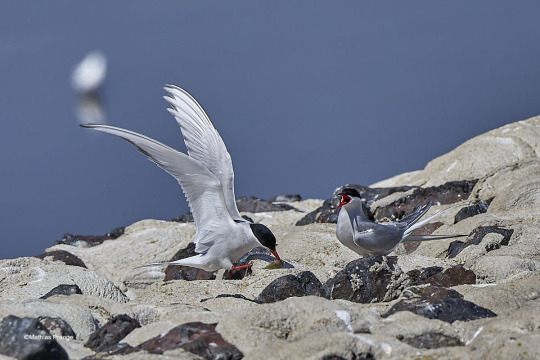
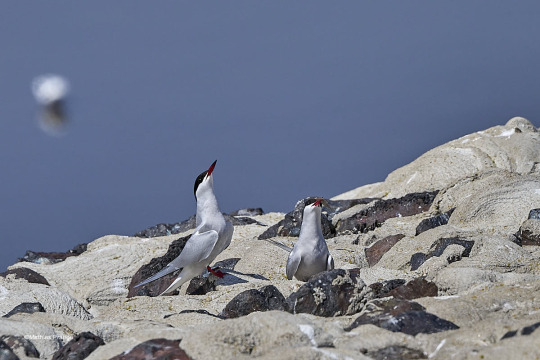
Fish for the girl
#photographers on tumblr#original photography#birding#bird photography#bird watching#common tern#Flussseeschwalbe#Katinger Watt#Eidersperrwerk
318 notes
·
View notes
Text

Common Tern
495 notes
·
View notes
Text
The State Birds Initiative: Massachusetts (#6)

Whoa, it's December already? Wow! Been a while since I made one of these, but I honestly needed the break I think. So, uh...where were we? Ah, right.
Welcome to the sixth official poll of the State Birds Initiative! Before the poll, though, one thing real quick, and I cannot emphasize this enough! Read the post below before voting in the poll! It's not a requirement, but it is a real firm suggestion, especially important if you're lacking context about the birds being presented as the new (or old) State Bird of the Bay State, Massachusetts. This is to be fully informed as to why these are being presented, and to make your choices appropriately. Lastly, some of these birds, you will notice, *may *go against some of the rules listed in the introduction post. All is explained after the jump where the explanations are, I promise you that. With that...OK! Here's the poll!
Welcome to the sixth official poll of the State Birds Initiative! Before the poll, though, one thing real quick, and I cannot emphasize this enough! Read the post below before voting in the poll! It's not a requirement, but it is a real firm suggestion, especially important if you're lacking context about the birds being presented as the new (or old) State Bird of the Bay State, Massachusetts. This is to be fully informed as to why these are being presented, and to make your choices appropriately. Lastly, some of these birds, you will notice, may go against some of the rules listed in the introduction post. All is explained after the jump where the explanations are, I promise you that. With that...OK! Here's the poll!

Massachusetts, baby! I've had to travel away from the Bay State in the past week for a conference, but I'm excited to get back to this surprisingly great state. I say surprisingly because Massachusetts' reputation isn't a greatest for those outside of it, but living in it has definitely changed my mind for a number of reasons! That said, the time has come to talk about it a bit. The sixth smallest state in the union, Massachusetts is home to a number of prominent cities, both historically and contemporaneously. There is of course, Boston, the capital and largest city seen above via the big-ass CITGO sign. And while that's the city people equate with the entire state, let's not forget Worcester, Springfield, Cambridge, Lowell, Plymouth, Salem, Amherst, Natick, Cape Cod, etc., etc., etc. There's a whole-ass pile of classic New England cities in this small state, as well as a bevy of habitats and natural spaces.
So, to get into it a bit, Massachusetts is smack-dab in the New England temperate forests, with the highlands dominating the western portion of the state, and a flat lowland coastal region in the eastern half. Forests are temperate mixed, which contributes to the legendary falls that we see in New England. The coastal regions, meanwhile, are glacial in origin, covered in wetlands towards the center of the state, and beaches on the shores. Also of note are the various coastal marshes throughout the state, which serve as their own predominant habitats. Using the BioMap2 project as a framework, let's talk a little bit about these habitats.
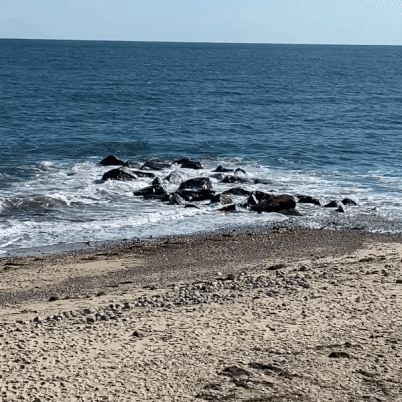
Massachusetts, of course, sits on the Atlantic Ocean, which certainly isn't a first for this list, but is vitally important as we go further north into New England. In the case of Massachusetts, we're looking at sandy beaches and dune habitats as prominent foraging and nesting areas for various shorebirds, which does make shorebirds a high likely focus for this list. Some of you probably know one of the most important birds we'll be looking at, but we'll get to that one, don't worry.
Alongside the beaches, estuaries are a prominent habitat along the shorelines. Places like Plum Island, in northern Massachusetts, or Belle Isle Marsh in the middle of Boston itself, personally come to mind. Massive saltmarshes that are vital stopover habitats for migrants, habitats for insects and endangered turtles, and coastal salt ponds and tidal marshes that house incredible biodiversity within them. There's a lot of focus coming to the coastlines, that's what I'm saying. All of these habitats and the species within them comprise about 41,000 acres of land, and about 75% of that is in danger from development and rising sea levels.
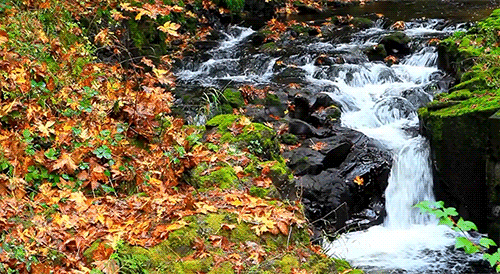
Now, I'm gonna skip over a bunch of other habitats here, especially freshwater wetlands and riparian habitats, because while these are extremely important, they won't be getting as much focus here. Now, we need to move on to the forests. I've talked about them before in Connecticut, New Jersey, and Pennsylvania, but we've got a very specific situation here in Mass. Here, because of the large number of people and settlements, fragmentation is a very prominent problem in the state. For the uninitiated, habitat fragmentation is basically what it sounds like: splitting up habitat by roads or other man-made corridors, breaking up populations of several animals, birds included. Doesn't sound like a big deal to animals that can fly, but birds don't like crossing corridors if they can help it, because it makes them vulnerable to predation (of adults and nests) and car strikes. So, forests of New England and Massachusetts are a habitat of needed focus. And while this will receive a slightly lesser focus, most likely, it's still a place we'll take a look at.
These three habitat types, wetland, coastal, and forest, are the most important in Massachusetts, as well as in New England (which, again, will change slightly as we head further north). But there's also the ever-important human element to consider, ESPECIALLY here.

While I said Boston doesn't define the entire state, and it doesn't, it's also the second most populated city on our list of states thus far, and happens to be one of the most important places in the country historically. Let's not forget, this is basically the seat of the American Revolution in many ways, so it's a pretty major part of our cultural identity as a country. And trust me, Boston is fully aware of that fact. I'm never one to dabble in stereotypes, but Bostonians are extremely proud to be Bostonians most of the time. It's a proud city, and that's understandable from a traditional point of view.
Plus, with Plymouth Rock 40 minutes to the south (and not worth the drive, from what I've heard), the textile-based seat of the American Industrial Revolution 40 minutes to the north (looking at you, Lowell), the site of the "shot heard round the world" 15 minutes away (Concord and Lexington, of course), the oldest American university 5 minutes away (Cambridge, of course), and the home of the legend of the American witch about an hour north (Salem, of course)...look, it's a central hub of the state, and it WILL not be ignored! So, with that said, grab some coffee from Dunks and some clam chowdah, let's settle in and check out some birds!
If anybody has a suggestion that I hadn't brought up here, send it my way! I will absolutely add another poll if there are entries I think could bear fruit. But, in the meantime, read on if you're interested in the possible choices for the State Bird of Massachusetts!
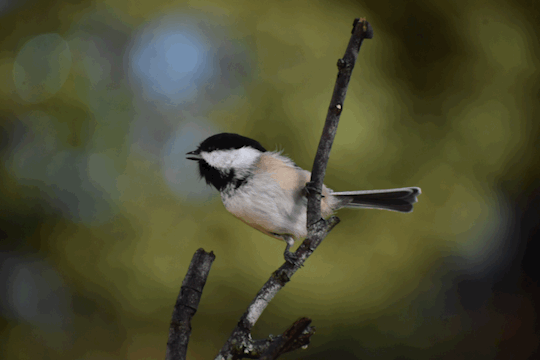
Black-capped Chickadee (Poecile atricapillus)
I gotta say, I have a real soft-spot for these guys. Although, to be fair, I think most people do! Named after their iconic call, and their memorable black cap, the Black-capped Chickadee (Poecile atricapillus) is one of the most iconic birds of New England, and arguably of North America. I say arguably only because there are a few chickadees in the United States, but the Black-capped is one of the most famous. We'll revisit the rest in two later posts, but this one is our focus today.
This bird was originally chosen because, well, it's iconic. I assume. To be honest, I don't actually know why it was chosen, outside of it being recognizable. It's also possible (POSSIBLE) that it was inspired by nearby Maine's choice of State Bird. But that's a choice we'll get to at a later date, I promise you that. As for the BCCH here, does it fit the state? I'll be honest, I actually like the chickadee for Massachusetts' State Bird. Partially, that's because it's a bird that can be found all throughout it with no difficulty, and it's an excellent beginner bird for kids (and just-starting amateurs). But, it's also small and incredibly scrappy, just like Massachusetts. I've had these guys in hand before, and I tell you, these little bastards'll hammer away at your cuticles with their beaks to get you to let them go. Doesn't hurt, unless they really try to grab on and twist at a sensitive spot, but they're fighters!

They're also quite social and vocal, which also fits residents of the Bay State. They have a unique language, with an alarm call that's recognizable by multiple bird species for warning, and it's also their most famous call ("chick-a-dee-dee-dee-dee"). The more "dees" there are, the higher the perceived threat is, fun fact. They hang out in groups in the winter, both with other chickadees and other birds, and their brains generate new neurons in the autumn and winter to remember and navigate to places where they can find food during a difficult harvesting season. That's how I feel when I have to remember where the nearest Dunks is for coffee, not gonna lie.
I realize that I'm making some convincing arguments for the incumbent here, but...yeah, there's a reason. I do honestly think this is a solid choice for the State Bird of Massachusetts, so I'll support its re-election if that occurs. But with that said and presented, let's move on to the challengers. Some are good, some are mediocre, and some are a bit surprising. And some...should maybe belong to a different state.
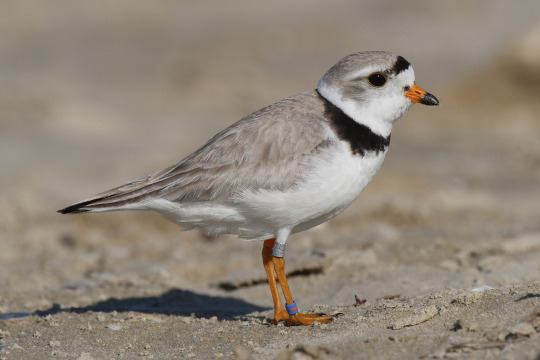
Piping Plover (Charadrius melodus)
eBird's suggestion is, unsurprisingly, the Piping Plover (Charadrius melodus), because a whopping 25% of the breeding population can be found in Massachusetts, according to eBird Status and Trends. And WOW, that is a massive proportion. That means, just to make this clear, one in 4 of ALL Piping Plovers are born in Massachusetts. Significant proportion, meaning that this has a claim on the role of MA State Bird for that reason alone. And Massachusetts certainly knows this, as several beaches in the state are shut down during the plover breeding season to allow them to nest in peace, without human disturbance.
In fact, when Piping Plovers were declared endangered in the Endangered Species Act, Mass Audubon launched the Coastal Waterbird Program to protect them and a later entry on this list. The population has exploded tenfold in the last 40 years of conservation work, and these are a pretty easy to find species now, if you're looking for them. This is a great introductory bird, both to conservation efforts, and to shorebirds (which are notoriously difficult to identify). It's also, surprisingly for shorebirds of this ilk, pretty easy to identify. And also...they're incredibly cute. I mean, have you seen the babies? It's crazy how cute they are. Seriously, LOOK AGAIN. Precious. Another solid candidate, and an excellent representative of the beaches of Massachusetts.
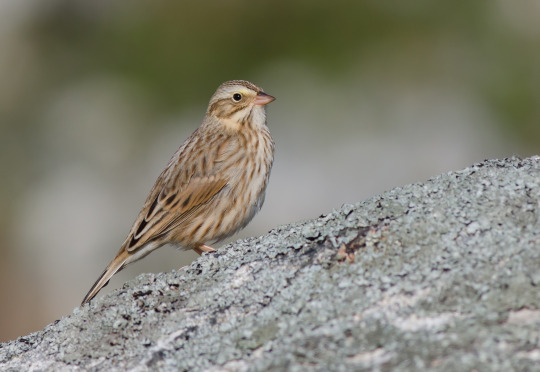
Ipswich Sparrow (Passerculus sandwichensis princeps)
Ah, the Savannah Sparrow (Passerculus sandwichensis). We meet again. Sorry to abandon you back there in Georgia, but to be fair, you were only nominated there because you're named after a major city in the state. But here...ah, wait, right, same thing. Now, to be fair, you've probably mentioned that the nominated bird is the Ipswich Sparrow (Passerculus sandwichensis princeps), not the Savannah Sparrow. But this is, of course, a subspecies of the Savannah Sparrow, named after Ipswich, Massachusetts due to its first sighting there. Larger and paler than its compatriots, the Ipswich Sparrow is known from Massachusetts...but breeds in Nova Scotia. Yeah, we've got another Connecticut Warbler (Oporornis agilis) situation here. Yikes.
So, is there a reason to nominate this bird for Massachusetts outside of its name? Well...actually kinda. These pale sparrows are, to be fair, pretty uniquely found in Massachusetts. And, while this isn't the only place you can see it, it is a reliable place to find it. It's sighted on the dunes on the Massachusetts coast, blending in with the light-colored sand, and making its way to and from Nova Scotia, where it only breeds on one island. So, conservation concern (and focus), seen in the state (even if it doesn't breed there), relies on some of its habitats of focus (saltmarshes and coastlines), has a tie to it that's unique to Massachusetts...it's something. Not as good as other options, but...something. In any case, let's move on.

Snowy Egret (Egretta thula)
Hold on. We saw this guy in the Connecticut post! What is this post, a bunch of repeats? Well, to be fair here, the Snowy Egret (Egretta thula) is a slightly better fit for Massachusetts than it was for Connecticut...for the exact same reason it was suggested for Connecticut. Well, part of it, anyway. I stand by the idea of applying the "macaroni" label to the Snowy Egret to fit with Connecticut, but it's the Audubon Society part I'm focusing on here. Lemme quote the previous post:
To be clear here, quite a lot of birds were used in millinery back in the day, but the Snowy Egret (and the Great Egret (Ardea alba), for that matter) are special. Those long white feathery plumes were heavily prized as hat decorations, enough so that the species nearly went extinct from hunting them for the hat trade. As a result of that, people began to turn their eye towards conservation of the species, and the protection of birds in general. Two women, Harriet Hemenway and Minna B. Hall, got a group of women together to protect the birds. They rallied the troops, and their organization became fairly popular. Eventually when they sought to name it, they did so after one of the most famous ornithologists in American history at the time: John James Audubon. And from there...well, you can guess.
The Audubon Society is one of the premiere bird conservation organizations in the world, and especially in the United States, and is well-known to the public sector. And it was born right here in...Massachusetts. Oh. Wait, have I jumped the gun on this one?
I had, indeed, jumped the gun. So, to fix that now, let's throw the Snowy Egret in here instead! After all, it does breed in the state (a little bit), and I actually saw some earlier this year in Parker River NWR! It has a historical tie, and to the largest conservation organization in New England! Trust me, Mass Audubon is a MASSIVE deal up here, and their link alone gives me cause to put the Snowy Egret on this list. That said, though...that's not their logo.

Common Tern (Sterna hirundo)
To my genuine surprise, the logo for Mass Audubon is actually the Common Tern (Sterna hirundo), an aerial and acrobatic seabird found on the shores of Massachusetts, in some surprising places. In Massachusetts, though, there's a major tie to conservation and the Common Tern, because this is actually one of the birds whose feathers were stolen for hats, inspiring the foundation of the movement. Yeah, both the Snowy Egret and this species, which was (and is) more common here. So, if there's an Audubon-related bird to be elected, it probably should be this one, to be honest. This is a species, understand, that was crashing in population in the late 1800s, and was saved from hunting by a young Mass Audubon. Between 1889 and 1920, the population bloomed eightfold, from 5,000 pairs to 40,000 pairs. An impressive population boom in every possible way. However, that wouldn't last.
Herring Gulls (Larus argentatus), human activity, and various other disturbances have created numerous population crashes and bottlenecks in the species' history in Massachusetts, keeping them a conservation focus to this day. The species has notably spread throughout the state's coastlines to this day, and they aren't terribly hard to find. In fact, you can see them in the Boston Harbor, from the shore! I've seen Common Tern from the New England Aquarium very often, in fact, and it's sort of magical to see them smack-dab in the middle of the city. Their habitats of beaches and shorelines need to be maintained and protected, so throwing the conservation focus on them is incredibly valuable for the species' future. A solid choice for State Bird (or another category sponsored by the SBI), if ever there was one.

Veery (Catharus fuscescens)
But wait, coming in at the last moment, just making it, the Veery (Catharus fuscescens)! Yeah, this one's a bit of a surprise, but I found out some very interesting info recently. The Black-capped Chickadee (Poecile atricapilla) was not the first nominee for State Bird; instead, in 1931, the State Federation of Women's Clubs (yup, another woman's organization) nominated the Veery for the State Bird...and got shot down. It took them ten years to nominate the Chickadee for unknown reasons, meaning the Veery probably didn't even get its day in court. Shameful! So, let's try and rectify that here, shall we?
Veery are thrushes, famous for the beautiful, ethereal calls that give them their name. This is a robin-sized migratory songbird that breeds in the forests of New England and southern Canada, and are an iconic New England bird in their own right. They're found in forested wetlands (that's two habitats of concern in MA), usually fairly close to beaver ponds, and the two species are often associated. It's also a species mentioned in Henry David Thoreau's Walden, one of the most important environmentalist literary works in American history, as well as an important Massachusetts story. It's also currently spreading in the state, increasing the size of its range, while also experiencing slightly decreasing populations, meaning that focus is still needed. And again...that song. It's a delight to hear it in forests, and recognizing it is a great step for beginning birders to pay more attention to the sound around them.

And with that...yeah! We'll end it there! Only six nominees, and you're probably wondering what's happened to the State Raptor and State Game Bird. Well...I'll explain that once we get to the results. Because that's a bit more complicated then expected.
See you next time, and happy birding!
Introduction to the State Birds Initiative
1. Delaware - Poll | Results 2. Pennsylvania - Poll | Results 3. New Jersey - Poll | Results 4. Georgia - Poll | Results 5. Connecticut - Poll | Results 6. Massachusetts - Poll | Results
#bird#birds#birding#birder#birders#birdwatching#black birder#state bird#state bird initiative#state birds initiative#birdblr#birblr#poll#tumblr poll#birds of tumblr#black-capped chickadee#piping plover#snowy egret#ipswich sparrow#common tern#veery#chickadee#plover#egret#sparrow#tern#thrush#massachusetts#birdposting
61 notes
·
View notes
Text
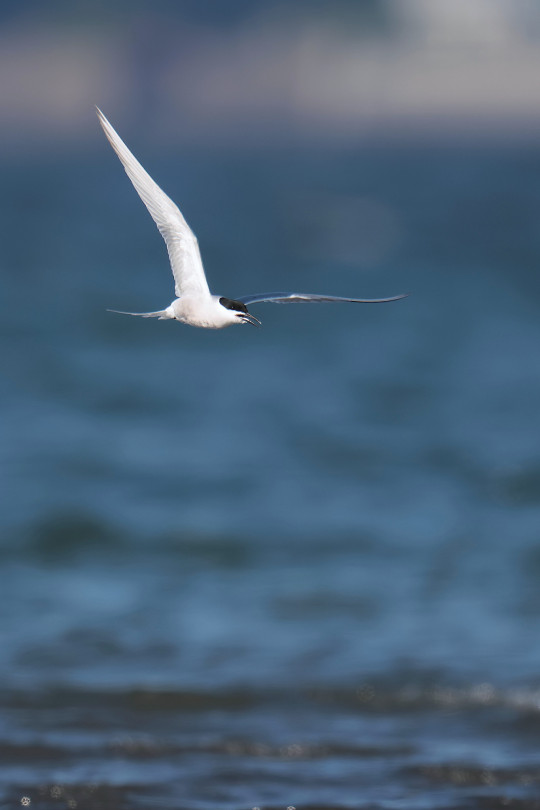
Sterna hirundo [アジサシ,Common Tern]
干潟にはアジサシもたくさん来てました。
他のアジサシが混じってないか探してみましたが、残念ながら混じってませんでした。
74 notes
·
View notes
Note
I love the bird banding photos where you’re holding their feet and they’re either like 😠 or shocked pikachu
Anyway 🎃 Twick or Tweet 🎃

Well then I have good news for you! This Common Tern chick banded in Maryland as part of an experimental nesting platform project is an excellent example of a 😠face
But of course it was put right back down after banding - it's great to see that they use these artificial platforms, which help to make up for centuries of dredging in the bay to provide access for ships but remove the sandbars and gravel beds that the species normally would be nesting on!
29 notes
·
View notes
Text

28 notes
·
View notes
Text

One good tern deserves another. 🤭
#photo of the day#photography#common tern#todays bird#bird#bird lovers#birdwatching#bird photography#nature photography#wildlife photography#wild nj#raindrops#rain photography#nikon photography#nikon coolpix p1000#Hudson River Waterfront Walkway#summer 2024
25 notes
·
View notes
Text
Common Tern Playing With Water ~ Bird Photography By Patricia Ware ~ Wildlife Photography

#common tern#tern flying#beautiful tern#photography#bird photography#wild life photography#patricia ware#women photographers#female photographers#women artists#female artists#photographers on tumblr#photography blog#photo-art-lady#photoblog#art#nature photography#fauna#birds#tern splashing water in the air#tern playing with water in the air#beautiful birds#bird in the air
25 notes
·
View notes
Text
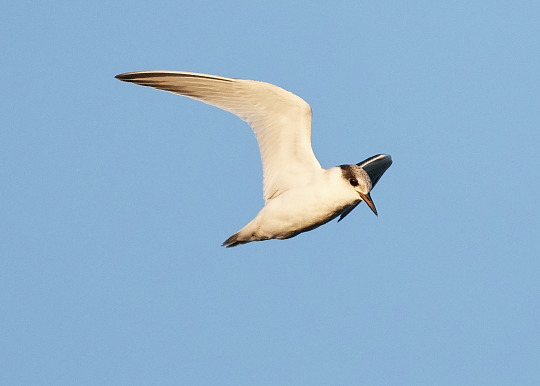
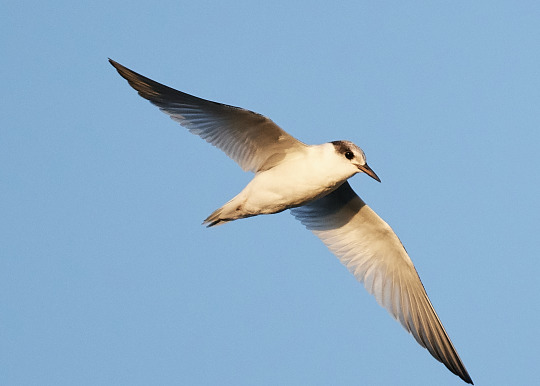

Common Tern, juvenile (I think?) San Joaquin Marsh and Wildlife Sanctuary Irvine, California, USA July, 2019
(more terns here)
15 notes
·
View notes
Text
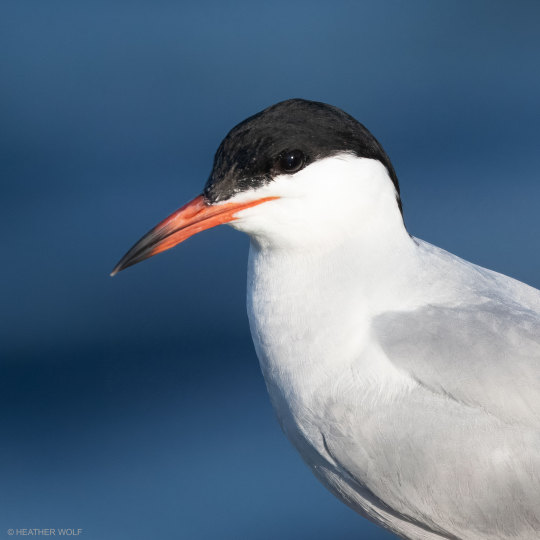
Common Tern Brooklyn Bridge Park, Pier 3
#birds#birding#urban birding#nuts_about_birds#birdstagram#patch birding#nature blogger#nyc nature#brooklyn#brooklyn bridge park#nyc#nature#tern#common tern
343 notes
·
View notes
Text
Turku
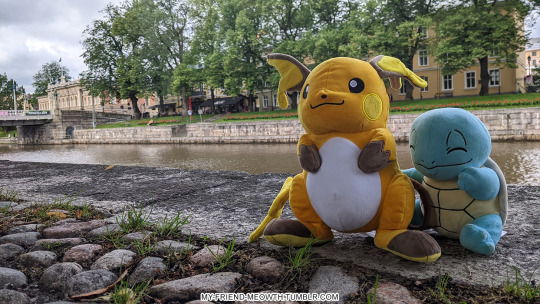

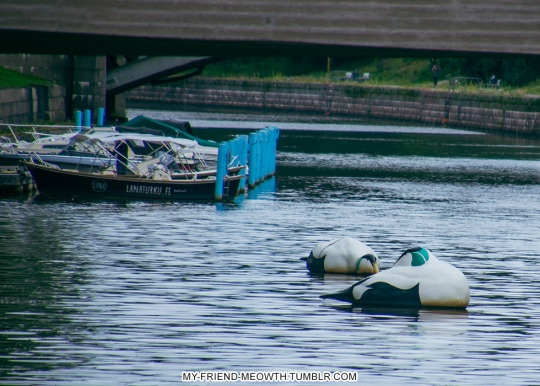
Gigantic common eiders (Somateria mollissima) in Aurajoki


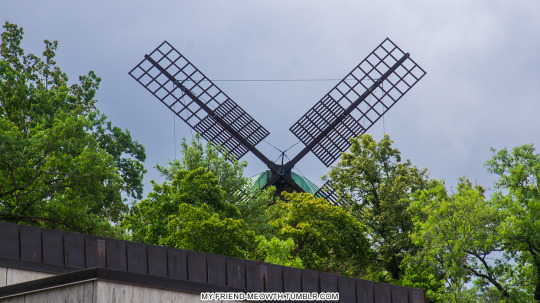

We saw many common terns (Sterna hirundo)
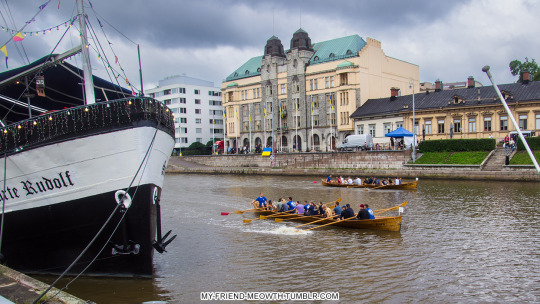
19 notes
·
View notes
Text
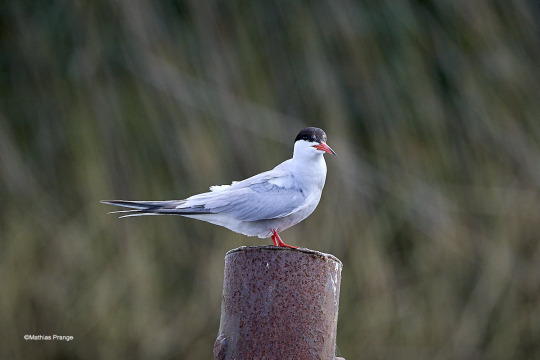
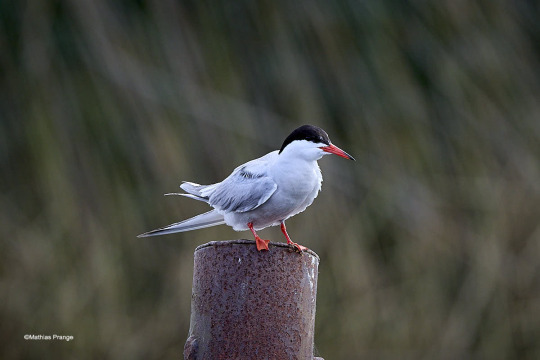
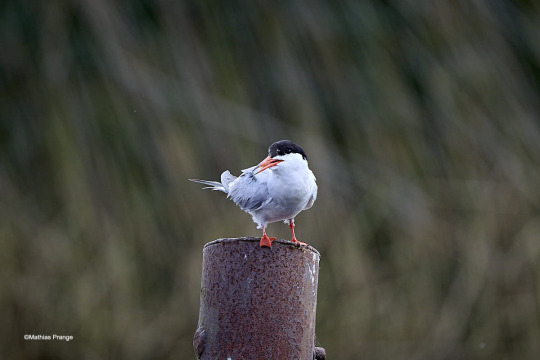
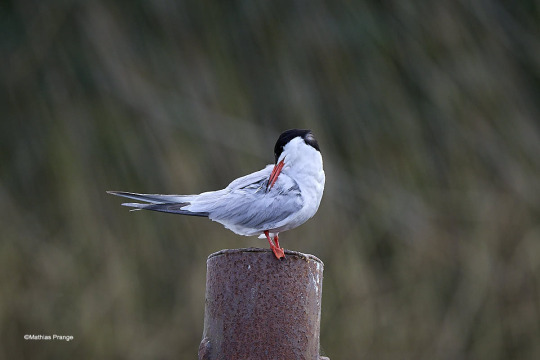
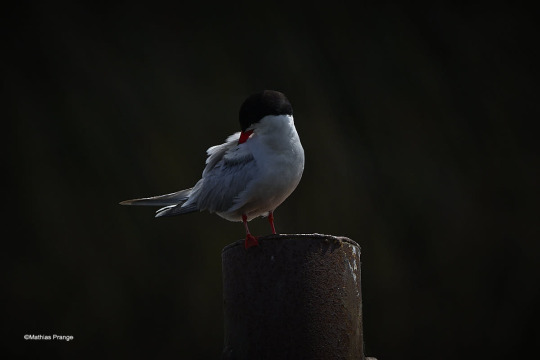
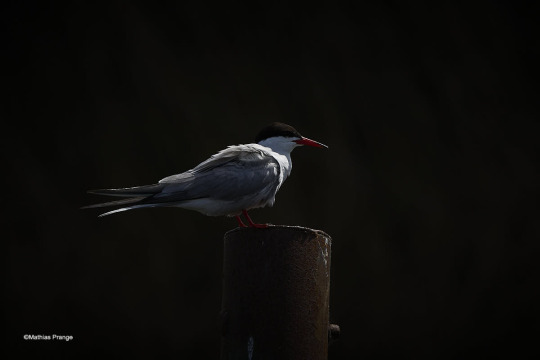
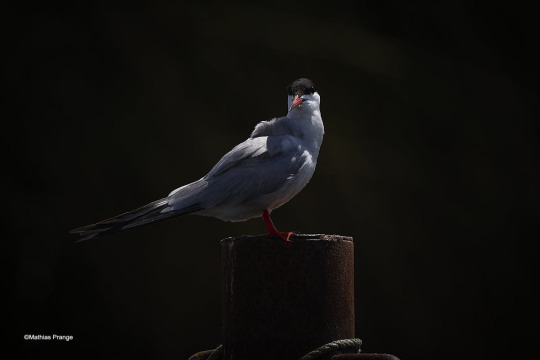

The elegance of the common tern
#photographers on tumblr#original photography#birding#bird photography#bird watching#common tern#Flussseeschwalbe#Lübeck#Schellbruch
115 notes
·
View notes
Text



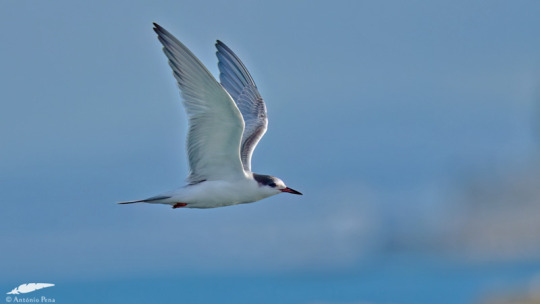

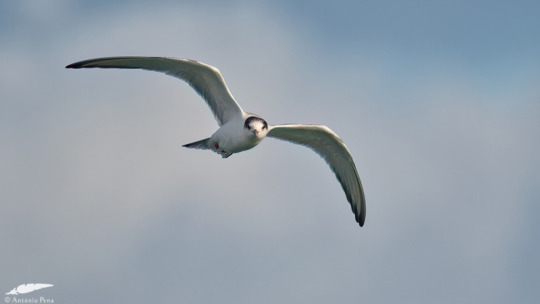

Common Tern - Andorinha-do-mar-comum (Sterna hirundo): 1st winter bird
Oeiras/Portugal (22/11/2024)
[Nikon D500; AF-S Nikkor 500mm F5,6E PF ED VR]
10 notes
·
View notes
Text
The State Bird Initiative: Massachusetts (#6) - Results

Hope everybody had or is having a good holiday! It's been an interesting week, especially because the Bald Eagle (Haliaeetus leucocephalus) has just been selected by President Biden as the National Bird of the United States! Wow! I honestly did forget that the Bald Eagle had previously been a National Emblem, rather than an actual National Bird! So, hey great timing for this, and proof that there is some legislative attention given to state and national symbols after all! Very cool! I'll actually rvisit this choice at the very end of this poll series, whenever I end up finishing. But for now, let's proceed!
After the difficulty with choosing a bird for Massachusetts, we've got our results! And in the picks for this poll and state, we'll have an interesting line-up, and a number of surprises to fill out our normal roster! With that, who did Tumblr choose as the State Bird of the Bay State?

Now that is a surprise!

SBI Elected State Bird of Massachusetts: Piping Plover (Charadrius melodus)
The Piping Plover (Charadrius melodus) has won the position of the State Bird of Massachusetts, in a LANDSLIDE upset as compared to the Black-capped Chickadee (Poecile atricapillus)! And to be honest, I have no objections, especially because 2024's monitoring of Piping Plover populations has just been released, and for the second year in a row, the population is booming! It's fully plausible that, if the Piping Plover is finally taken off of the Endangered Species list (where it is listed as threatened), it'll be because of Massachusetts! And yes, its role as one of the iconic conservation stories of Massachusetts, and the USA in general, makes this an excellent candidate for State Bird!
That said...I am a bit sad for the Black-capped Chickadee. After all, not only is it an incredibly iconic bird for the area, but it's also a pretty important part of state symbology. It's on the Welcome signs on the highway, it's...uh...OK, that's all I can think of right now, but it is known! Still, that means we can free up BCCH for another state, so this might prove interesting down the line! With that, we're going to choose the rest of the birds in the SBI lineup, so feel free to read on to see the Game Bird, Raptor, Big Fifty Pick, and Conservation Focus of Massachusetts. Otherwise, see you in the next state, Maryland!

Now, last time, in the poll post, I said I would explain why there were no good candidates for State Game Bird or State Raptor proposed in that post. And that's because, frankly, any choices wouldn't be the best choice for State Bird, meaning their candidacy for the overall poll would take away from the overall choices. So, that makes these choices fully my opinion as the writer of this blog. If you've got any personal choices you think would fit better, let me know! But with that said, let's get to our first choice: State Game Bird.

State Game Bird of Massachusetts (SBI): Wild Turkey (Meleagris gallopavo)
...OK, now, hear me out. I recognize that we've already elected the Wild Turkey (Meleagris gallopavo) as a State Bird, specifically of Pennsylvania. And I stand by that choice. However, repeats between categories are acceptable, just not within a category, at least in my opinion. Secondly, the Wild Turkey is actually already the State Game Bird of Massachusetts. Yeah, forgot to mention that one. However, it's also the State Game Bird for Alabama, Oklahoma, and South Carolina (kinda). So why am I just giving it to Massachusetts? It's not the best state for hunting them, it's not a major bastion for breeding, and turkeys aren't in any way a species of conservation concern here. So, why the Wild Turkey, other than the fact it's already got the job?
Because Massachusetts saved the Wild Turkey. Almost. Not really.
To address this, we need to go back to 1851, when Massachusetts had no turkeys left. After centuries of hunting and habitat loss, the species was extirpated in Massachusetts. Yeah - no turkeys anywhere in Massachusetts. To be fair, this was not the first state the turkey had disappeared from; however, it was the LAST one. By 1851, New York. Vermont, and Connecticut had also lost their turkeys, meaning that New England was almost out of the birds. In the 1860s, the turkey became a symbol by way of Thanksgiving, thanks to Abraham Lincoln, but some states had a mild issue with that because...well, there were no turkeys. So, reintroduction efforts began...in 1911. These efforts failed. They failed 9 times.

Then, in the 1970s, 37 turkeys from New York (where reintroduction WAS successful) were released into western Massachusetts (in the Berkshires). This was HYPER successful, and by 1978, the population bloomed and spread to over 1,000 birds in 2 counties! After that, 561 more turkeys were released throughout the state, and now we have about 35,000 turkeys all over the state...for good and for bad. Not really bad, but take it from me, the Massachusetts turkeys are a lot to handle. They're notorious in some areas near Boston for their iconic nature, AND their territoriality. I has on the Harvard campus last fall, for, like, the second time ever, and a couple of males ("toms") were hanging out on the lawn when a random businessman walked past them, and they chased that dude for, like, 2 blocks. They're aggressive, but they do tend to pose for pictures!
Maybe more prominent than, though, is Kevin. Kevin led a gang of similarly-named turkeys in Woburn, Massachusetts (one of the suburbs of Boston), and they're apparently pretty goddamn violent! The neighborhood has named the individuals, and they'll straight-up ATTACK people, trapping them in homes and cars. And this isn't the first time thi has happened, AND it's SPREADING! I'm telling you, one turkey saw that really shit animated movie Free Birds through a television window one time, and it sparked the flames of revolution here in MA. The Boston TurTea Party. So, an iconic bird with a complicated history in Massachusetts...and an even more complicated reputation. Then again, that sounds EXACTLY like Massachusetts, so this is honestly a perfect fit! And yes, that means all of the other states just got shafted out of the Wild Turkey as a Game Bird, so we'll see how that goes moving forward! What's next?
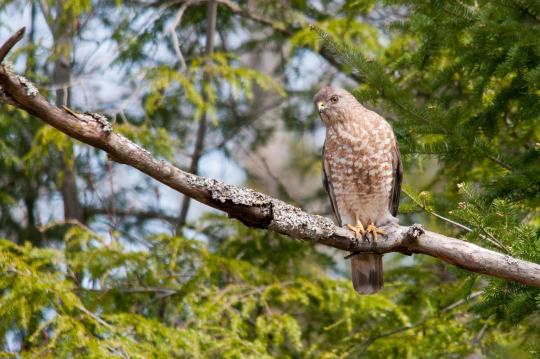
State Raptor of Massachusetts (SBI): Broad-winged Hawk (Buteo platypterus)
This was, absolutely, the most difficult state to choose a raptor for this time around, because there are few raptors with a real significance in Massachusetts, from a breeding range standpoint or a cultural standpoint. Now, to be clear, there were a few good options. Cooper's Hawk (Astur cooperii) isn't a bad choice, necessarily, but it would fit with other states a bit better. Red-tailed Hawks (Buteo jamaicensis) aren't a horrible fit, but they could fit anywhere, honestly, and I have another state in mind for them. And then there's the Peregrine Falcon (Falco peregrinus), which has exploded in the state since its extirpation, but I've already got one extirpated species on the list, and there's a MUCH better place to put (or keep the Peregrine). In fact, there are two places, but that's a struggle yet-to-come. Osprey (Pandion halieetus) is in a similar situation.
So, uh...why the Broad-winged Hawk (Buteo platypterus)? It's not an especially prolific breeder in Massachusetts, although no raptors really are. And there's no real cultural tie to any raptor, this one included. However, this is hawk is one of the smallest, without being the smallest in North America, it's a specialist in the forests of Massachusetts, especially in the western portion of the state, and most importantly, it's an extremely common fall migrant. It's so common, in fact, that's it's a bird of highlight during fall hawk migrations, which are a notable sight in the state. And the Broad-winged Hawk is by far the most common member of this group in those mass migrations. So, there are reasons. But with all of that said...this is a weaker choice, I admit it. I'm more than happy to bring this guy up again by the end of this project, but this is the answer to the Massachusetts State Raptor question...for now.
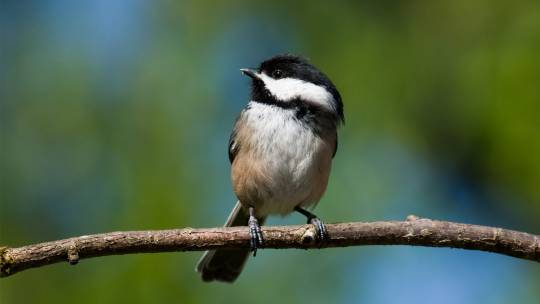
SBI's Big Fifty - Massachusetts: Black Chickadee (Parus atricapillus)
“Hope” is the thing with feathers - That perches in the soul - And sings the tune without the words - And never stops - at all - -Emily Dickinson, from Amherst, MA
...Ah, screw it. Look, to be honest, the plover was supposed to go in this place, because I really didn't expect the incumbent to lose this race! And to be fair, this is maybe the most common bird on the eastern seaboard, and its relatives are exceedingly common throughout North America. It won't even be the first time it's in this poll series! And nobody's ever actively gone out to hunt for this bird, if they're a serious birdwatcher. But to hell with it! I love chickadees! And they deserve to be remembered somewhere. And, considering that it's one of the most iconic North American songbirds, it deserves a place in the Big Fifty.
And are there other birds that could take this spot? Absolutely. The Wood Thrush (Hylocichla mustelina) was my choice for a while, because I associate my childhood in the state's forests with the bird (I didn't grow up here for the most part, but did live here for a short while as a teen). But, the Wood Thrush has other sites to be featured in, frankly. What about the Great Black-backed Gull (Larus marinus), whose massive Massachusetts breeding populations I, uh, sorta slept on in the nominee-choosing process? Valid choice, but Big Fifty worthy? And this is also a state full of crazy-ass visitors in recent years, like Brown Booby (Sula leucogaster) this past year, American Flamingo (Phoenicopterus ruber) the year before, and Steller's Sea Eagle (Haliaeetus pelagicus) the year before that! But those are visitors, and unreliable for this state. But still, why the chickadee?
Because it's name might actually have been invented by one of the most prominent American authors and famous Massachusetts resident, Henry David Thoreau. Yeah. Seriously.

OK, two things. One, yeah, this is the guy who wrote Walden. One of the creators of the environmentalist movement in literature, a transcendentalist extraordinaire! One of the most iconic authors from the state, and he invented the word "chickadee"? Two, yes, I know, WHY DIDN'T I BRING THIS UP BEFORE? 'Cause I literally just found out. But, yeah, damn, that's a compelling-ass argument for State Bird of Massachusetts.
But in my defense, he only maybe invented the word "chickadee", and it's somewhat doubtful. While he's quoted as an originator in the OED, and he used the word during its first recorded appearances, there are other recordings that use the word around the same time, and it's uncertain whether that was before or after Walden's writing. And, since the name comes from the song it makes, it's reasonable to say he may not have invented the word. But that's interesting, right? So, with that said...I think the chickadee deserves a spot. Plus, hey, everybody's gotta start somewhere on their birdwatching journey! Might as well give a freebie in this list of 50 birds! Oh, and if you're wondering why I didn't choose the Ipswich Sparrow (Passerculus sandwichensis) here...well, it mostly breeds in Canada, and it's an unreliable bird to find in Massachusetts. But, if this offends you, feel free to use that as your Big Fifty entry instead. Moving on!
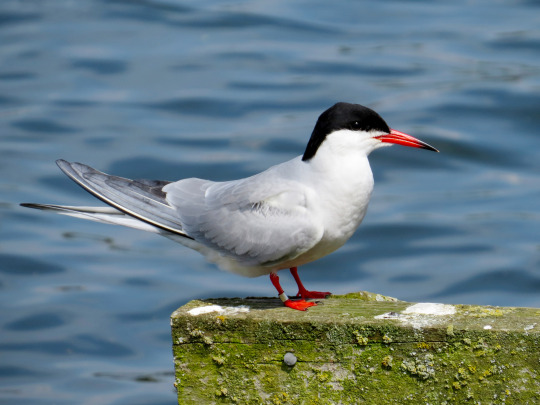
State Conservation Focus of Massachusetts (SBI): Common Tern (Sterna hirundo)
Finally, another nominee who made it into the final list, and our last entry in this state's appointees! The Common Tern (Sterna hirundo) got its write-up in the original post, so feel free to check that out for more. But, really, unsurprisingly, the tern is meant to represent the shores of Massachusetts, and all of the birds who nest there. Throw in the Great Black-backed Gull (Larus marinus), which has one-third of its global population born in Massachusetts, as well as the various other shorebirds that breed here (and there are a LOT of them), and you've got a Conservation Focus! Plus, hey, what better bird for this category than one of the decline in the state, and the original and current symbol for Mass Audubon. It's the best choice, in my opinion!
And with that...yeah, those are our appointees. Please feel free to leave feedback on this one, since this was definitely a tougher one for a number of reasons. I may revisit some states in the future, so if you've got any opinions or ideas, feel free to contribute, either publicly or privately, your choice! Have an excellent day/night, and get ready for some Old Bay seasoning and some Smith Island Cake, we're headed to Maryland next!
See you next time, and happy birding!
Introduction to the State Birds Initiative
1. Delaware - Poll | Results 2. Pennsylvania - Poll | Results 3. New Jersey - Poll | Results 4. Georgia - Poll | Results 5. Connecticut - Poll | Results 6. Massachusetts - Poll | Results
#birds#birding#birdwatching#birdblr#bird#birder#black birder#birds of tumblr#birblr#state birds#state bird initiative#sbi#state bird#massachusetts#state symbol#poll#tumblr poll#black capped chickadee#chickadee#piping plover#plover#turkey#hawk#broad-winged hawk#tern#common tern#birdposting
9 notes
·
View notes